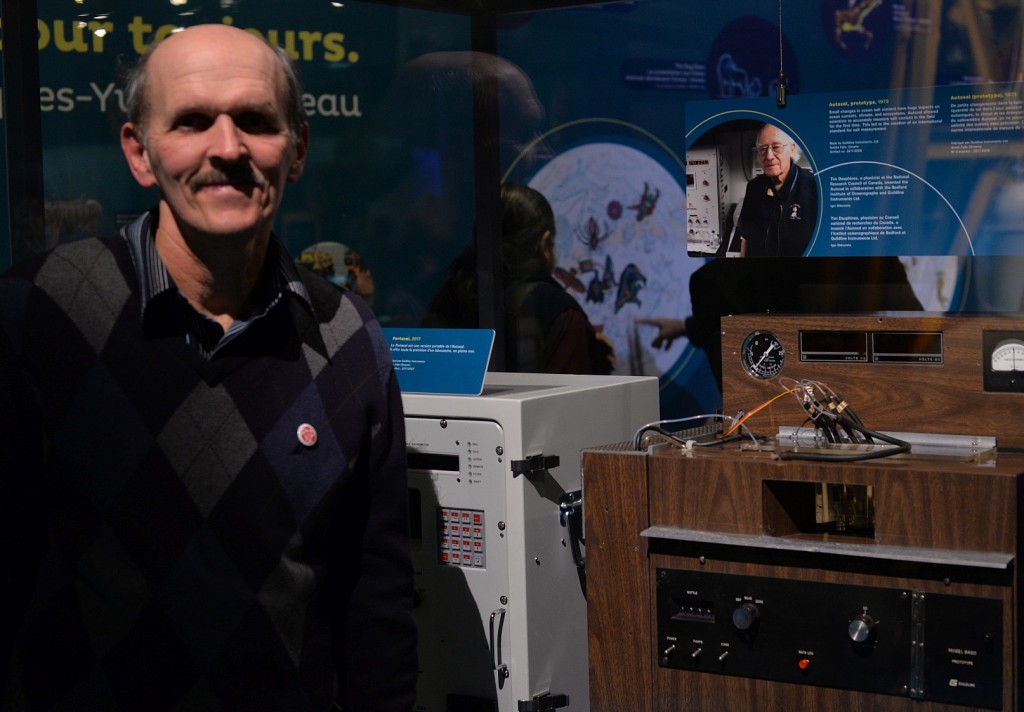It took some time for his work to gain recognition but finally it happened!
The newly opened and renovated Canada Science and Technology Museum hosted the presentation of Tim Dauphinee’s prototype of AUTOSAL salinometer c.1973, information about the importance of his invention and his photo with Autosal 8400B (which I took when Tim visited me at RBR 9 years ago). During the preparation of the Exhibition “Hidden Worlds” (the Ocean Science section) I’ve been voluntarily consulting the Museum on a matter of salinometry, Tim Dauphinee’s invention and the importance of measuring salinity in Ocean Science.

My big thanks to Dr.David Pantalony, Lead Curator of the Exhibition, for his great work in commemorating Tim Dauphinee’s contribution to Oceanography and also for giving me credits for my modest consulting work. I remember how disappointed I was at my first visit of this Museum 15 years ago, when I didn’t find any information about Tim Dauphinee work on development of Autosal salinometer and the Practical Salinity Scale-1978. Today the collection of artifacts at the Canadian Science and Technology Museum includes the AUTOSAL prototype, which was at testing and in use many years ago in the Bedford Institute of Oceanography (BIO).
Also big thanks to my ex-colleague Dr.Clark Richardson who found this artifact in the BIO’s warehouse: he sent me a photo of this apparatus to confirm what it was. You can see this photo on a page Development of Salinometers. Amazing, isn’t it?
That was the beginning of the way for the AUTOSAL prototype to take a rightful place in the Canadian Museum of Science and Technology, and I am very glad that all together we did it!
It is a great commemoration of Tim Dauphinee, who didn’t have 10 months of his remarkably centennial life to participate with us in his salinometer displaying Museum’s unveiling ceremony…
But his AUTOSAL is with us. It stands illuminated on a pedestal in the Museum of the great achievements of the Canadian Science and Technology. And Tim Dauphinee is with us too – in our Memory, in our Museum, in our Work.
Igor Shkvorets






 Visit Today : 56
Visit Today : 56 Visit Yesterday : 178
Visit Yesterday : 178 This Month : 5956
This Month : 5956 Total Visit : 302661
Total Visit : 302661 Hits Today : 157
Hits Today : 157 Total Hits : 717219
Total Hits : 717219 Who's Online : 2
Who's Online : 2